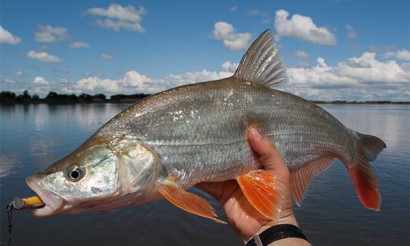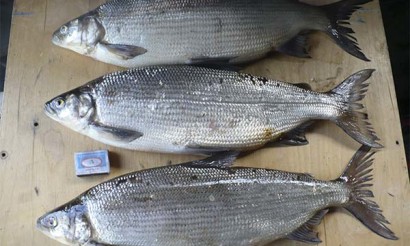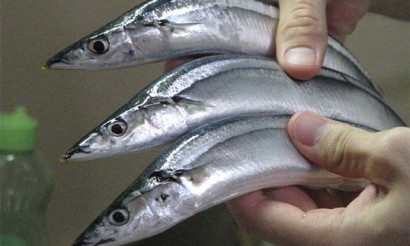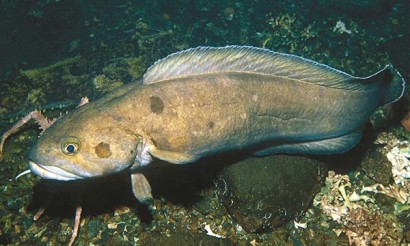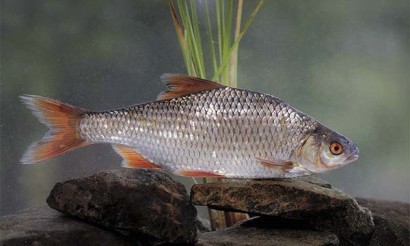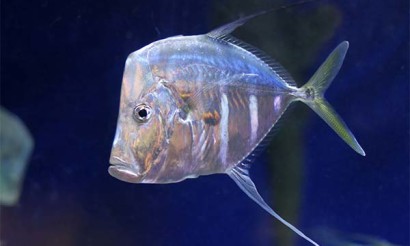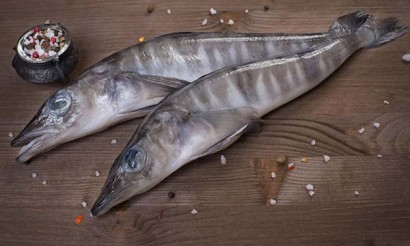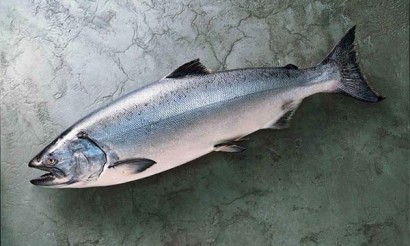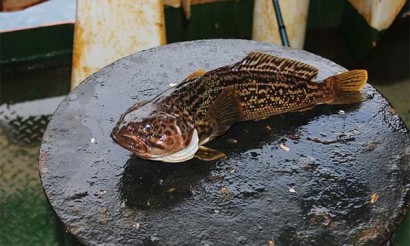Mullet fish: photo, description, useful properties and recipes
Dumpling (lat. Coregonus pidschian) is a representative of the salmonids, so it is called in another way - Siberian whitefish.
- Pidschian: what kind of fish it is, how it looks and where it is found
- How does it look?
- Where does it live?
- What does it eat?
- Breeding process
- How to catch Siberian whitefish: when, where and on what?
- When to catch
- Where to catch
- What to catch
- Composition and calories
- What is the usefulness of Siberian bluefish?
- Harm and contraindications
- Rules of storage
- How to cook fish grouper tasty: recipes
- In the oven
- In the pan
- Q&A
- What does paddy fish taste like?
- Fatty or not?
- Are there many bones in the fish?
Mullet: What kind of fish is it, what does it look like and where does it live?
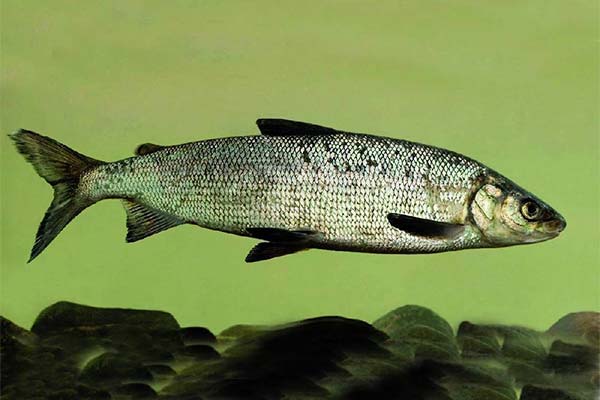
What does it look like?
The body has an elongated shape. Adult fish and juveniles are distinguished by the presence of a hump on the back and a golden shade of scales. The head and back are colored dark gray, while the abdomen and flanks are light and silvery.
A distinctive characteristic feature of the murrelet is the small number of gill stamens. The caudal, anal, and dorsal fins are dark in color, and the paired fins are light in color. The head is small, with a small toothless mouth. There is a tubercle between the eyes at the top. Dense and small scales. The roe is yellow-golden in color. Adults grow to 30-50 cm in length and weigh 600 g to 2 kg. On average, fish can live up to 10-12 years.
Where does it live
Pigeonberry prefers clean, oxygen-rich waters. Its habitat is the tundra and forest-tundra zone of lakes and the basins of rivers flowing into the Arctic Ocean. And also on Lake Baikal, in the upper reaches of the Yenisei and Ob, and all the way to the Taimyr.
The Siberian whitefish can be classified as a lake-river or semi-anadromous fish. Large numbers of the whitefish can be observed in deltas and lower reaches of full-water rivers, saline and freshwater bays.
The main location of whitefish in river channels is determined by their diet. The fish prefer river systems with mud and sandy bottoms where they can feed.
What they eat
Pigeonflies are a typical representative of benthophages. The diet depends on the season, locations, and age of the fish. Young fish feed in shallow water, including in the thickets of lakes, rivers plankton. From the 3rd year of life, Siberian whitefish are fattened by microorganisms living in the thickness and at the bottom of water bodies.
In summer, starting in July, the whitefish actively gain weight due to the appearance of larvae of chironomids and midges in the water, starting in August - of biting midges and caddisflies, and occasionally they eat mollusks. In September the whitefish also feed on their own spawn and on remnants of vegetation. The diet of adults is supplemented with fry of the ruff, perch and the like.
The breeding process
River murrelets spawn from September to October, while lake murrelets spawn from November to December.
Females lay their eggs in the gravel substrate at depths of between 5 mm and 2 cm. Spawning usually lasts about 20-25 days at night. The water column in these areas moves at a speed of 2-3 km/h. During the day, the fish move to quieter places to rest.
One medium-sized female is able to lay up to 30 thousand eggs. Often only a third of mature females take part in spawning, because the young are subject to resorption, i.e. the process of resorption of unmet eggs. The fish begin to lose weight due to lack of appetite and may die.
The highest rates of fecundity are shown by Siberian whitefish in Yakut rivers - more than 100 thousand eggs, along the Lena - about 40 thousand and in the Kolyma channel - up to 35 thousand.
In the Ob, the murrelet is found in the delta and lower part of the river. In Altai, a small concentration of fish can be observed in the Teletskoye Lake. There are two main spawning trips in the Ob basin: from the Taz Bay to the Taz and Pur Rivers and from the south of the Ob to Seyakha.
The Yamal whitefish leave for spawning for a short time downstream to the mouth sections of the Baidar and Ob Bays.
In summer, the fish ascends from the Nadym River to its upper reaches, dispersing along its tributaries. If the water level drops during this time, the Siberian puffer stays in the location until the start of ice age.
How to catch Siberian whitefish: when, where and on what?
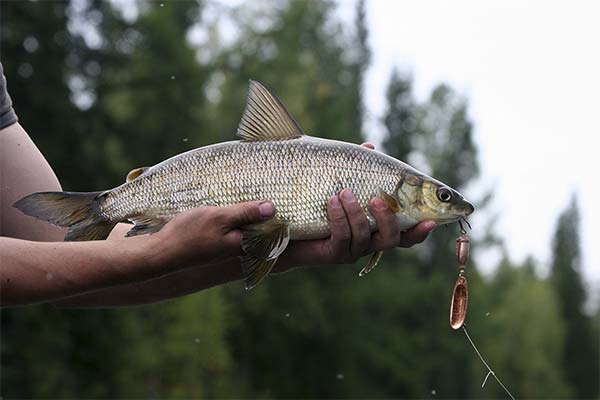
When to catch
The onset of spawning causes the fish to migrate to the southern basins of the northern rivers, from where anglers can return home with a good catch of salmon.
The best time to fish for Siberian whitefish is in the evening. When the weather is overcast, it may bite all day.
Where to catch
Most often the fish can be found in rivers flowing into the Arctic Ocean.
Experienced anglers have paid attention to the concentration of fish in the Tunguska basin:
- In the Podkamennaya Tunguska (Taiga Summer, Transparent Waters).
- In the Labynkyr (Ivanka-Chay, Lake Excitement, South Shore, West Island).
- In the Upper Tunguska (Evenk shore).
Catches in such bodies of water as the Kolyma, Amga, Penzhina, Buor-Yuryakh, Khorotu, and Undyulun can often be successful.
The mouth of the Yenisei is recognized as the best place for fishing during the spawning period of the puffin.
Places with weak currents attract salmonids for spawning. In the fall, the concentration of fish for spawning is the highest.
What to fish for
The Siberian whitefish has come to the taste of amateur anglers. Fishing is carried out by fly fishing, i.e. with bait in the form of insects or their imitation. Effective for fishing various kinds of silver and oscillating baits, which are used in trout fishing.
Often fishermen catch Siberian whitefish for caviar, mollusks, chironomid, using as bait sunflower oil and oil cake.
Composition and calories
Fillet of Pollack can be classified as a dietary product. There are only 113 kcal per 100 g of meat, 76 g of water, 18 g of protein, and 4.6 g of fat. Fish contains potassium, magnesium, iron, phosphorus, selenium, zinc, copper, calcium, vitamin D, vitamins B, PP, A, E, as well as omega-3 fatty that are necessary for many processes in the body.
What is useful for whitefish?
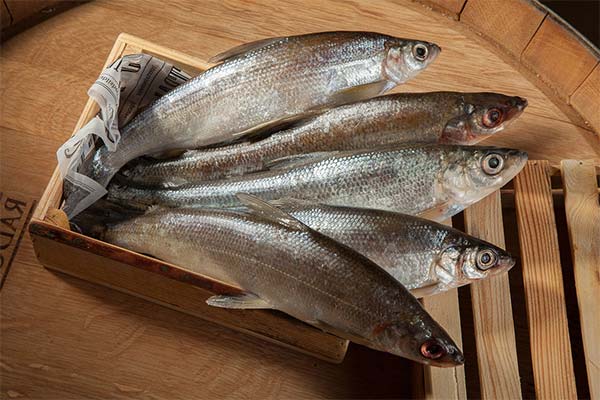
Most often the Siberian whitefish lives in cool and clear waters, where the pathogenic influence of humans on flora and fauna is minimized. Therefore, fish accumulates a lot of useful minerals, vitamins, fats, which are well assimilated by the human body.
Cooked from whitefish dishes have a positive effect on:
- digestive, nervous and cardiovascular systems;
- immunity;
- condition of hair, teeth, nails.
The product is beneficial for vision and the thyroid gland.
Harms and contraindications
Contraindications to the use of murrelet can be an individual intolerance or purchase low-quality products from unverified sellers.
Rules of storage
Fish is stored in freezers for up to 5 years at -5 degrees, at +8 - no more than 6 months. In vacuum bags in lightly dried form at +4 degrees will be safe to eat for up to 4 months.
Before putting whitefish in the freezer, it should be wrapped in thick paper and packed into small portions. Fish can be used in cooking for up to 1 year.
In dried form and hung on the balcony, in the closet or in the attic under the condition of high humidity (80%), the fish is edible for about 3 months. In this case, you can be limited to wrapping in parchment, not thick paper. The main thing is to ensure that there are no insects that can infest the fish with parasites.
Well salted in brine, mushrooms can be eaten up to six months.
Important! Do not eat fish if it shows an unusual yellowish color and unpleasant smell.
How to cook fish coddler: Recipes
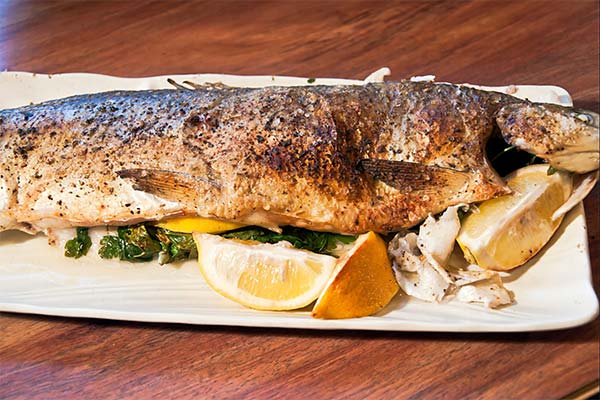
In the oven
Full cooking time, including gutting and other manipulation will be about 3.5 hours. The finished dish is designed for 3 servings.
Ingredients:
- Artemisia - 1,5 kg;
- olive oil;
- allspice;
- thyme;
- lemon juice;
- salt.
The amount of spices should be added, guided by your taste. If you wish, you can use other seasonings, favorite and proven on other fish of the salmon family.
You will need a baking tray and foil for baking.
First you need to peel the carcass of murrelet with a knife in the direction from the tail to the head. Cut open the belly and take out the gills, get rid of the innards, as well as blood clots. Then wash the Siberian whitefish and dry it with paper towels or napkins. Next, rub the fish with pepper and salt. Put the whitefish in a baking tray covered with foil. Drizzle olive oil and lemon juice on top of the carcass, spread the cloves and thyme evenly. Tightly cover the billet, let marinade for a couple of hours in the refrigerator.
Put the tray in the oven heated to 150 degrees, bake 1.5 hours, then open the foil, turn down the heat to 90 degrees. In about 15-20 minutes all the liquid will evaporate. The fish can now be served with potatoes or rice as a garnish.
In the pan
Ingredients:
- 4 medium sized puffer fish carcasses;
- 0.5 l of milk;
- 4 Tbsp. flour;
- butter for frying;
- salt and pepper to taste.
How to prepare:
- Clean fish, remove innards and rinse thoroughly.
- After drying with paper towels, place on a flat wide plate. Make incisions and pour milk over the fish.
- Wrap the whitefish in cling film and leave for 2 hours in the fridge.
- Drain the liquid that has run out in 2 hours, dry it with a towel. Salt and pepper the mushrooms.
- Melt butter, put the flour-covered fish on a pan, and fry for 10 minutes on each side.
Q&A
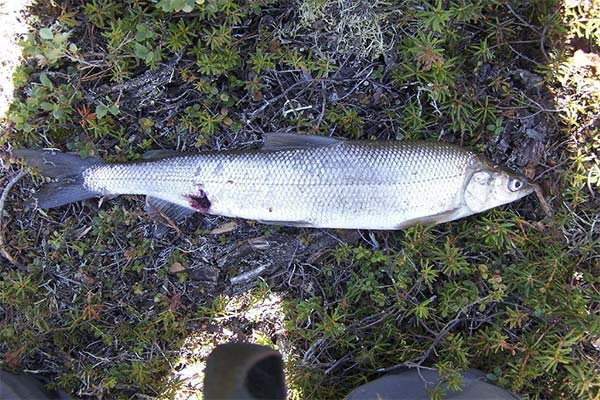
What does cured guinea fowl taste like?
Fish has a delicate aromatic taste. The broth based on the Siberian whitefish is on par with the sterlet. Many gourmets note the similarity of flavors of murrelet and sockeye caviar.
Fatty or not?
The product has only 4.6 grams of fat in 100 grams, making it suitable for inclusion in weight loss menus.
Are there many bones in fish?
The skeleton consists of the backbone and ribs. There are no small dorsal bones.
Bigeye is not only tasty, but also healthy fish of the salmon family. But it is important to remember that any fish should be thoroughly salted for several days before consumption or subjected to sufficient heat treatment, so as not to get infected with parasites.
«Important: All information on this site is provided for informational purposes only. for informational purposes only. Always consult a health care professional before using any of the information on this or any of the recommendations. should be consulted with a healthcare professional. Neither the editors nor the authors shall be liable for any possible harm caused by materials."

